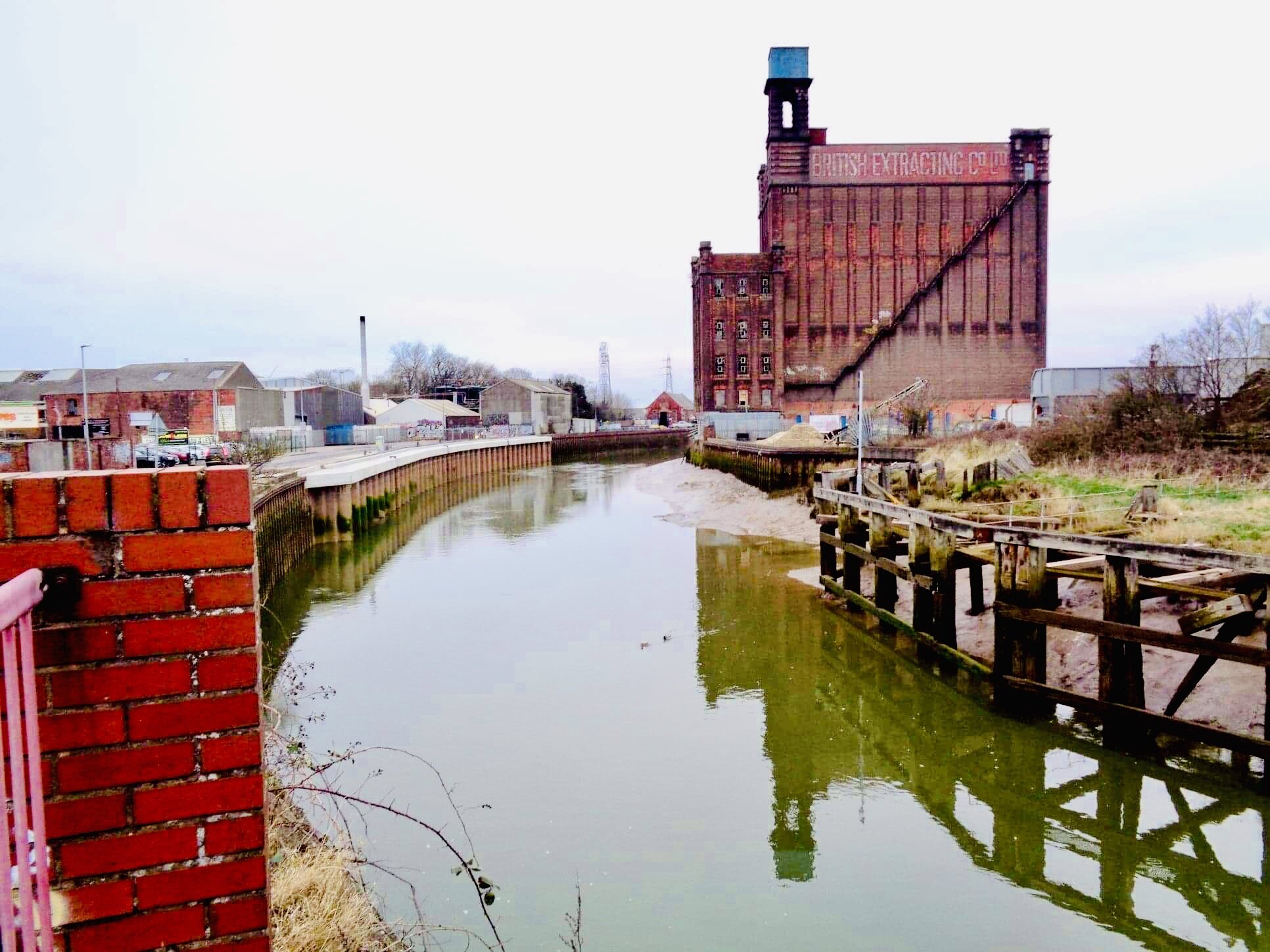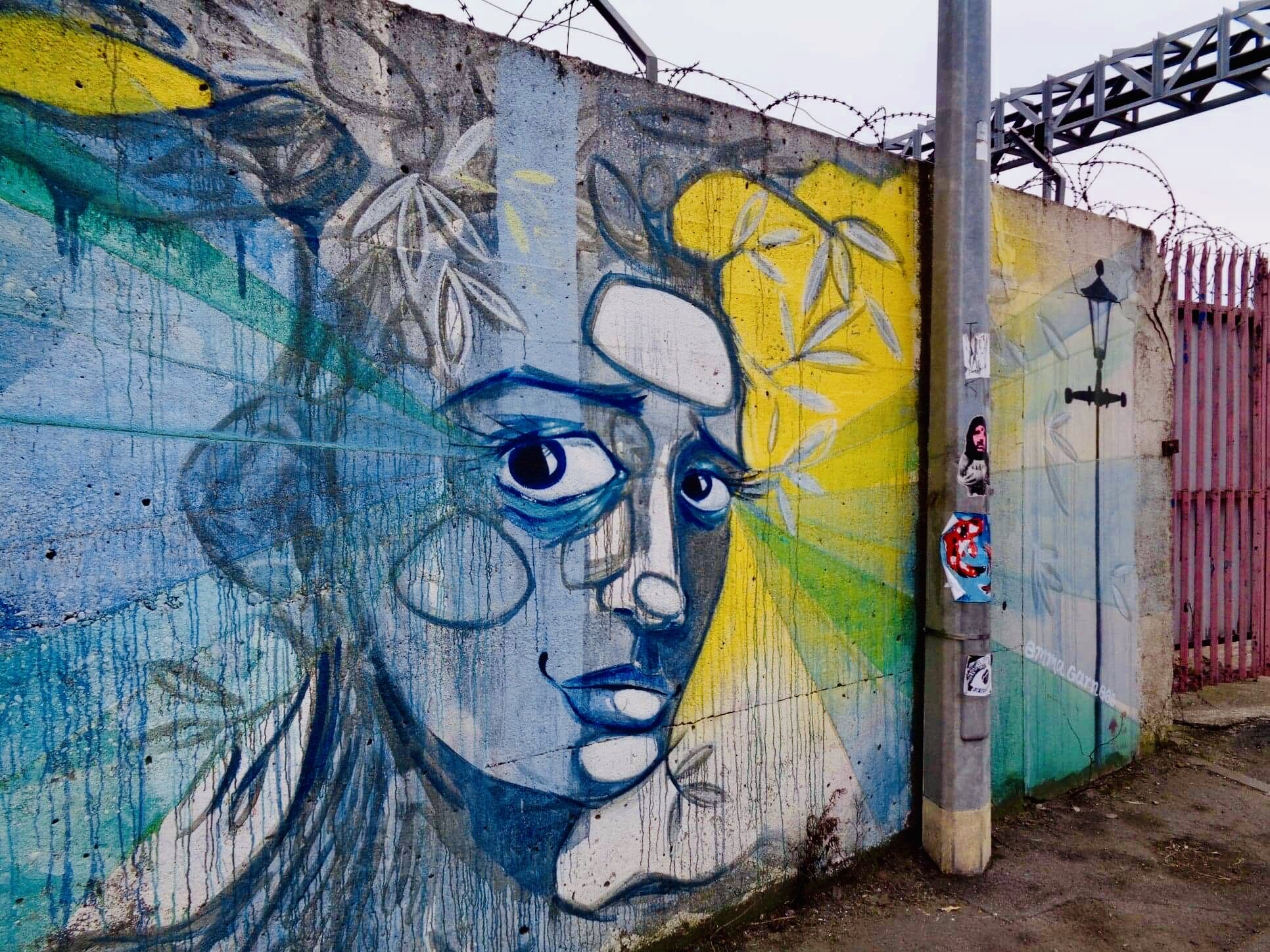‘Bankside is a place where industry is tucked up close against art and nature’
This Place, a column by Vicky Foster
Exploring Hull & East Yorkshire
When I was a kid, living on Dansom Lane and Holderness Road, the dark smell of unrefined cocoa lay over everything.
It was faded by the time it reached us there, but the closer you got to Bankside, the heavier the smell. Not chocolate - something on its way to being chocolate - still earthy and industrial.
That smell disappeared about ten years ago, with the closure of the factory, but the tanner’s yard is still there, offering up “wet blue hides” and “double-butt splits”, and one of the other smells of my childhood.
Bankside is a place where industry is tucked up close against art and nature.
Soulful blue eyes stare out from beneath barbed wire on the legal graffiti walls. The long yellow arms of cranes tower up over the river.
The sounds of the pounding work of diggers or trucks reversing are absorbed in the sound proofing of recording studio walls. Buddleias burst out from between fence railings and rusted metal sheets. There are other smells too; welding, hot metal, the fishy, salty tang of the river that shows itself emerging from behind the red brick buildings. Mud.
A view along the River Hull in Bankside. Picture by Harry Foster
At night, it feels like you’ve wandered into a Batman movie.
Usually in darkness, it’s a place I only see from the car. But there was one night, back in 2017, that I walked the narrow paths, picked my way between the graveyard and paint factories, dogs snarling and barking from behind security gates, until I found my way to Gate No 5.
To be fair, it wasn’t hard to find. You just had to follow the beat. Then people began to appear and eventually you found your way into the midst of music, red light, brick walls, bodies swaying and jerking, drinks spilling, and at the centre, John Grant. It was, after all, his party. The final event of his North Atlantic Flux festival, following his packed-out performance at Hull City Hall.
He’s not the only famous face to have graced these spaces. The name Banksy is never far from anybody’s lips when you mention Bankside. His presence is still felt there, three years after we all woke up to find he’d visited in the night, even if his actual artwork has been removed for now.
“Draw the raised bridge” was sprayed on an actual raised bridge – Scott Street bridge to be precise – and it’s part of the poetry of this place that it had to be removed because the river traffic, still part of the workings of the city, was at risk of it dropping down on top of them as they passed.
But the little guy with the pencil in his hand, and the mysterious fella with the spray paint, have done their job. Paved the way for Bankside Gallery, and the miles of artwork you can see spread out across Bankside, and the rest of the city.
‘WHERE ART MINGLES WITH INDUSTRY’: Bankside. Picture by Harry Foster
They’re not the only artists making their homes around here.
The Chocolate Factory (nothing to do with cocoa) is hidden away behind a blue gate, sitting alongside a cabinet-makers, a UPVC window and door manufacturer, a valeting company and Bankside café.
It’s hard to tell from the outside but it’s a hotbed of creativity. Element Studios is the home ground of acclaimed Hull ensemble Broken Orchestra. They have a writing room there, scattered with the artwork of their albums, flyers from tours, and the projects they’ve worked on, vinyl records, mixing desks, a piano, drums, leather tub chairs, and a curved window that looks out across the river and the yards and buildings that surround them.
They’ve also got a studio which much of Hull’s musical talent have made home for a day or a week or a month while they record their work. There’s floor after floor of space, and it’s set to many uses.
Slave to the Beat drum shop relocated here a while back, and another successful Hull band, Life, have a rehearsal space tucked away at the top of one of the concrete and steel staircases. You can have drum lessons, guitar lessons with Tom Kay, and there’s a photography studio too.
But still that’s not all that’s going on round here. G.F. Smith make beautiful papers, which are artwork in themselves, but which have also been the canvas for multitudes of books, including those of many Hull writers.
The thought of a day in their factory sounds like heaven to me, but just knowing it’s there, doing what it does, is pretty amazing too.
Then there’s The Whalebone, where you can try from a range of boxed ciders, snuggle up by the wood-burner and watch as poets and workmen and other regulars come and go.
‘BOXED CIDER, A WOOD-BURNER, POETS AND WORKMEN’: The Whalebone. Picture by Harry Foster
Bull n Bush is famous for its drag nights, while Oak Vaults and its Sunday night singalongs around the piano have satisfied many happy punters. You can find more pubs and cafes tucked in between car dismantlers, fast food suppliers and haulage companies.
As you pass into or out of Bankside, depending on your route, you might come across Emmaus, on Lockwood Street, just past the wrought iron bridge - a brilliant project offering a home and work to people who’ve been homeless.
Their warehouse is always worth a wander – full of bargain furniture and knick-knacks, and sometimes you can even catch “Hull’s 4th best poet”, Dean Wilson, playing the piano [Editor’s note: what a remarkable prospect that is].
Take a route down Cleveland Street and you’ll find the famous Spiders nightclub, home of the Pangalactic Gargleblaster and a million brilliant stories.
‘SOULFUL BLUE EYES’: Street art in Bankside. Picture by Harry Foster
Some people would say these places don’t fall within the boundary of Bankside, but it’s one of those places that doesn’t really have boundaries. Technically the name of one of the streets, the whole area has taken on the title.
It’s one of those places where you see something different every time you visit. There are half-rotted wooden doors opening out into the grey sky, a metal staircase staggering upwards on the outside wall of the abandoned British Extraction Co. building.
A bright pink limo, wheels removed, up on blocks. Boats, tantalisingly close to the river, but for now, upturned on concrete.
It’s a living modern artwork, and there’s talk that it’s on its way to becoming Hull’s latest cultural quarter, but it’s something more than that – more earthy and industrial – and it’s well worth a visit, whether we’re locked down or not.





